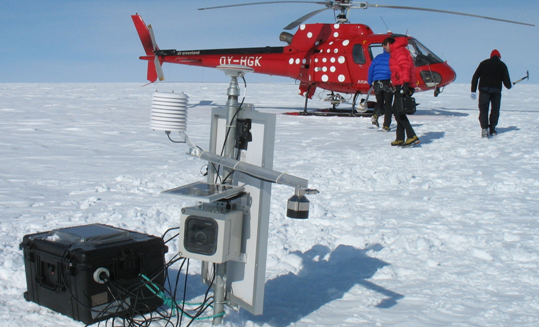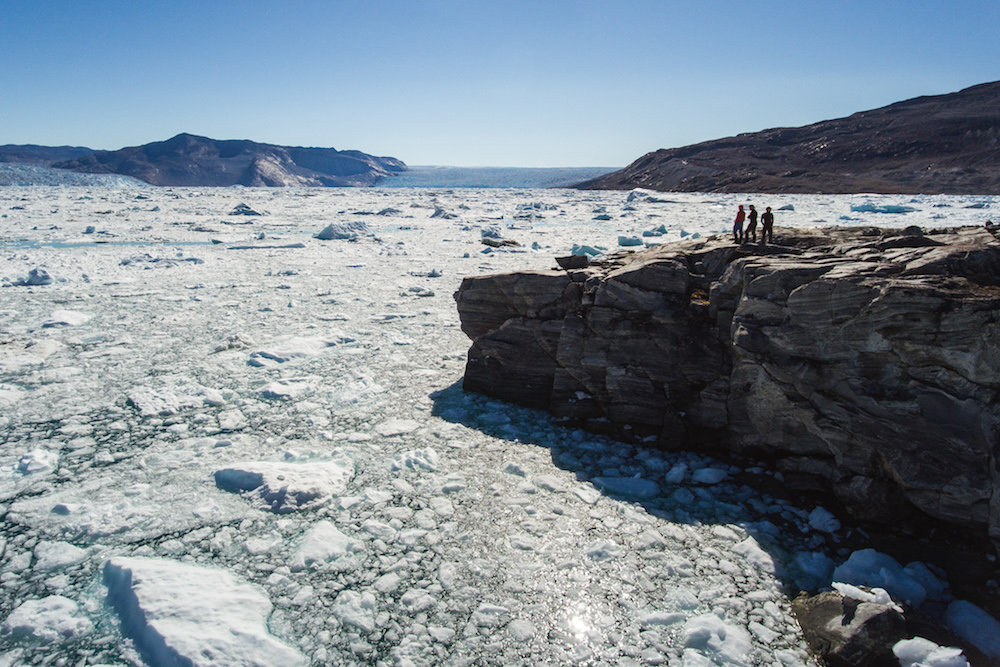Research

Hydrological Influences on the dynamics of glaciers and ice sheets
Following over a decade of research on Alpine hydrology and dynamics, I co-led a NERC project (2008-2012) to explore the extent to which the dynamics of the Greenland Ice Sheet are affected by seasonal injection of surface-derived melt water to the bed and sensitivity of this process to climate change. Through my collaborations with researchers from the Universities of Edinburgh and Bristol, we have published an internationally leading body of highly cited work that has made major progress towards resolving debates surrounding the significance of melt-induced dynamic thinning to the long-term stability of the Greenland Ice Sheet.
Mass balance of Arctic ice caps and the Greenland Ice Sheet
From 2000-2002 I was awarded a Leverhulme Trust Fellowship based at the Department of Earth and Atmospheric Sciences, University of Alberta, Canada during which time I was a collaborator on the CRYSYS funded project "Dynamics and Area/Volume Change of Canadian Arctic Ice Caps". Fieldwork in 2000 and 2001 on the Devon Ice Cap, Devon Island and Prince of Wales Icefield, Ellesmere Island, involved collection of shallow ice cores, velocity measurements (using differential GPS) and bed topography (using ground penetrating radar). I demonstrated that in situ 137Cs gamma spectrometry could locate the 1963 bomb layer in boreholes throughout the accumulation area of Canadian High Arctic ice caps, allowing mapping of long-term accumulation patterns and provided multi-decadal baseline measurements of ice cap mass balance. I have continued to collaborate with researchers from Natural Resources Canada to use field data from Devon Ice Cap to develop and improve snow and firn evolution models to better understand the sensitivity of melt and refreezing to climate change and to assess the impacts of refreezing processes on the future surface mass balance of Arctic ice caps.
From 2004-2008 I was institutional PI of a NERC Consortium Grant to validate satellite (CryoSat) based measurements of surface elevation change across the Greenland Ice Sheet. I combined my expertise in field-based process understanding with that of physicists, remote sensing experts and ice sheet modellers to understand the effects of surface melt, refreezing and run-off on the elevation change of ice sheets. I currently (2023-present) lead a NERC funded project to simulate the role of near surface ice layers within the accumulation area of the Greenland Ice Sheet in controlling refreezing and runoff within a cold-lab facility. We are using results from lab experiments to better parameterise 1-D models for use at ice sheet scale.

Greenlandic tidewater glaciers – long-term links between climate and iceberg calving
I have increasingly focussed on the issue of iceberg calving, one of the most important, yet poorly understood drivers of mass loss from marine terminating ice sheets and glaciers. The CALVE Leverhulme Trust Research Project Grant (2015-2018) brought together glaciologists, palaeoecologists and marine palaeobiologists to determine long-term (centennial to millennial) changes in tidewater glacier calving rates. . We are now using our unique reconstruction of both the advance and retreat cycle of a large tidewater glacier in SW Greenland to develop more robust models for the relationship between iceberg calving and climate. One novel and imaginative strand of this project was our investigation of the timing of abandonment of sites of Norse occupation in Greenland’s Western Settlement which may provide insight into the resilience of Norse settlement in the face of major environmental change.
Research groups
Research grants
Ice-layer Permeability Controls Runoff from Ice Sheets (IPCRIS)
NATURAL ENVIRONMENT RESEARCH COUNCIL
January 2023 - March 2026